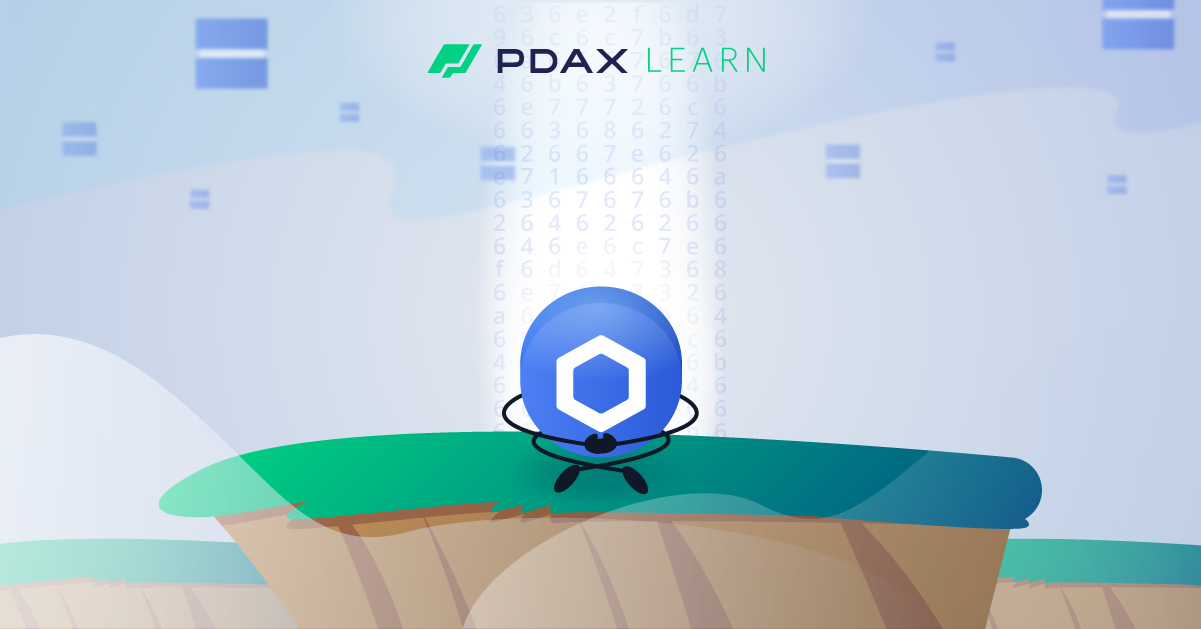For most Layer-1 blockchains, the data being managed and secured consists mostly of ledger entries–or rather, records for keeping track of who has how many tokens at any particular time. This is what preoccupies the validators for Proof-of-Work (PoW) and Proof-of-Stake (PoS) blockchains, who are essentially in charge of authenticating token transfers from one wallet address to another, and compiling the data in blocks which are then stored in the network chain.
But not all blockchains deal with the same kind of data, such as “oracle” networks like Chainlink (LINK) whose job is to link on-chain applications with off-chain data.
Instead of simply keeping a ledger like other blockchains, Chainlink works with various types of data to provide real-world information to smart contracts on the blockchain. As an oracle network, Chainlink thus functions as a bridge for connecting the blockchain with the outside world and allowing decentralized applications (dApps) to carry out their functions.
The data that Chainlink processes may range from the current prices of stocks, commodities, or fiat currencies, or even weather updates and sports scores. This information is then verified and relayed to networks and dApps that may have use for them, such as trading platforms, stablecoins or entertainment apps. This data is then used to trigger the app’s smart contracts, allowing for the execution of further transactions. And through the use of a decentralized staking architecture, the information relayed is kept accurate and truthful.
How does Chainlink work?
Chainlink oracles are similar to validator nodes in a PoS system, wherein a stake or collateral is required to participate in the network operations to earn rewards. However, instead of contributing hardware and computing power as is the case with networks like Cardano (ADA) or Solana (SOL), oracles are tasked with contributing reliable and accurate off-chain data. In return, they earn rewards when the data they provide is accepted and verified by other validators. Likewise, they can also be penalized if they provide inaccurate information by having their stake slashed, adding to the incentives to maintain honesty and integrity.
Chainlink follows an “order-matching” system wherein query jobs are posted by those who need off-chain data, matching them to the oracle nodes who meet the reputation score threshold set by the requestors. This effectively established a free-market system wherein oracles who perform well are matched with more job offers, while those who have bad track records will find it very difficult unless they improve their ratings.
What is LINK used for?
The LINK token is the utility token used to facilitate transactions on the Chainlink network. It is used to pay for the services of the oracle nodes, incentivizing node operators to provide reliable, secure and accurate data to the network.
LINK can also be staked by users to support oracles they trust and provide them with a higher reputation score. In turn, users get rewarded with a portion of the rewards earned.
LINK is also used to pay for transaction fees on the Chainlink network. These fees are used to cover the costs associated with running the network, such as the cost of running nodes, maintaining the network, and providing support to users.
Finally, the LINK token is used to reward developers who create new applications and services on the Chainlink network. This helps to encourage innovation and development on the network, and helps to ensure that the Chainlink network remains a leader in the blockchain space.
Tokenomics
LINK has an annual inflation supply of 1.4%. However as LINK tokens are burned whenever they are used in transactions, LINK’s supply is expected to become deflationary as user adoption grows.
Ready to start with crypto?
Start your trading journey with PDAX.
DISCLAIMER: The statements in this article do not constitute financial advice. PDAX does not guarantee the technical and financial integrity of the digital asset and its ecosystem. Any and all trading involving the digital asset is subject to the user’s risk and discretion and must be done after adequate and in-depth research and analysis.
About PDAX
PDAX is a BSP-licensed exchange where you can trade Bitcoin, Ethereum, and other cryptocurrencies directly using PHP!
Featured Posts
You might also like
MON (Monad) is now on PDAX!
PDAX
December 04, 2025
PDAX Learn: USDC on Arbitrum is now on PDAX
PDAX
December 01, 2025
Pump.fun’s PUMP token is now on PDAX! 🎈
PDAX
November 26, 2025
Aerodrome Finance’s AERO token is now on PDAX!
PDAX
November 12, 2025
